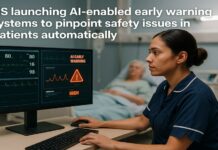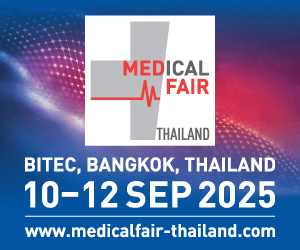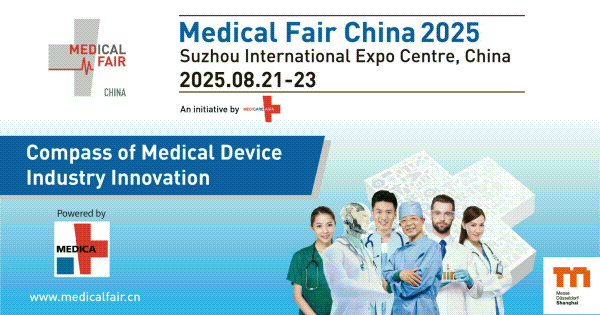Advances in medical imaging techniques are allowing doctors to detect hidden diseases and make ever more accurate diagnoses. But radiation safety experts at the International Atomic Energy Agency (IAEA) say that overuse of high-tech scanning procedures may unnecessarily expose patients to increased radiation levels. The IAEA, in collaboration with other international organizations, is developing a series of measures aimed at strengthening patient protection. The focus of recent efforts is a Smart Card project, to log how much radiation a person receives in the course of a lifetime.
Concern surrounds procedures such as computed tomography (CT) scans because they deliver higher doses of radiation to patients in comparison to conventional X-rays (radiographs). It´s been estimated that the average radiation dose of one CT scan is equal to roughly 500 chest X-rays. And that can increase a patient´s lifetime risk of cancer, particularly if CT scans are repeated.
"The medical application of ionizing radiation is the fastest growing source of radiation exposure to human beings today," says Renate Czarwinski, Head of the IAEA´s Radiation Safety and Monitoring Section. "We acknowledge the great value of the new technologies, but want to ensure that each and every examination is justified. The radiation protection of patients is also important."
According to the latest estimates of the United Nations Scientific Committee on the Effects of Atomic Radiation (UNSCEAR), as many as four billion diagnostic X-ray examinations are carried out worldwide each year. This represents an increase of more than 17% over the last ten years in the collective dose to the world's population.
In particular, the use of CT scanning has grown dramatically in recent years. This X-ray based procedure provides three-dimensional views of, for example, organs or blood vessels and represents unparalleled advances in terms of clarity of image, ease of application and patient friendliness. For this reason there is a growing tendency for more and more CT examinations to be carried out. But published reports in medical literature, for example the November 2007 New England Journal of Medicine, suggest that up to 50 per cent of all scans done today are questionable on the grounds of medical justification.
Strengthening Patient Protection
The IAEA is one of the key international players in the field of patient radiation protection. A unit dedicated to the Radiological Protection of Patients (RPoP) was established in 2001.
"Our objective is that the radiation protection of patients is given increased attention by health professionals, manufacturers, trainers and policy makers," says IAEA Radiation Safety Specialist Madan Rehani. "We´re attacking the issue from every angle and interest in the field is growing. The RPoP website, which offers information for health professionals and to some extent for patients, is receiving about half a million hits a month."
Currently radiation safety experts are working together with manufacturers and IT specialists to develop a Smart Card designed to register how much radiation a person receives in the course of a lifetime. This is a very ambitious plan but the development of X-ray machines that provide the radiation dose delivered in different examinations, as well as advances in electronic medical record systems, should eventually allow for this data to be included in medical records and on the electronic health cards already carried by people in many of the world´s developed countries.
A meeting to launch the radiation Smart Card scheme is being held in Vienna from 27-29 April, 2009, when it is hoped that much of the framework for the project will be decided and initiated.
The IAEA´s activities in radiation protection of patients include:
- Training, knowledge sharing and capacity building in the medical use of radiation. Extensive, up-to-date training material for health professionals is freely available on the RPoP website.
- An International Action Plan on the Radiological Protection of Patients that has been established together with leading international organizations such as the World Health Organization (WHO), UNSCEAR, the International Commission on Radiological Protection (ICRP) and others to identify strategies for strengthening radiation protection of patients.
- Coordinating and managing technical cooperation projects with Member States on patient dose assessment. The aim is to identify the factors that contribute to unnecessary radiation dose to patients, provide guidance on dealing with these factors and ultimately better manage patient doses. This will eventually contribute to a world map of patient safety dose statistics.
Among the development and implementation of these activities, it is important to emphasize the International Basic Safety Standards for Protection Aagainst Ionizing Radiation and for the Safety of Radiation Sources (known as BSS). The BSS are currently being revised to accommodate recent advances in technology, and in particular the role of medical experts, professional bodies, industry and regulatory authorities.
Weighing Benefits and Risks
Improved patient protection requires a multi-pronged approach including new techniques and tools to reduce radiation doses, better dose management and, most importantly, greater awareness on the part of the patient and of the doctor prescribing the examinations.
"A major concern at the moment is the growth in the number of CT scans being done around the world, especially in the developed countries," says Robert George, President of the International Society of Radiographers and Radiological Technologists (ISRRT). "The results and the benefits are so good that there´s a tendency to overuse the technology."
This means that strict guidelines need to be developed so that referring doctors carefully weigh the benefits against the potential risks and base their decisions on medically relevant data, bearing in mind the cumulative effects of multiple CT scans.
Scanning times today are much shorter, taking little more than a minute compared to as much as 15 minutes a few years ago. According to IAEA radiation safety specialists, some health professionals believe therefore that patients are receiving lower doses of radiation. But that´s not the case. Today´s sophisticated imaging devices deliver more precise information in a shorter period of time but they deliver the same amount of radiation as before, or even more.
Patients, too, should be encouraged to become better informed about why a radiological examination is being performed. Does it involve ionizing radiation? If so, has the procedure been justified adequately after considering other examination options that utilize non-ionizing radiation? This is all the more important in the case of CT scans or when an examination is to be repeated. However, according to experts such as Christian Herold, Chairman, Department of Radiology, Medical University of Vienna and currently President of the European Society of Radiology, care should be taken that this does not result in a patient refusing a duly justified examination.
Reducing the Dose
At the same time, procedures needs to be optimized by reducing the CT-related radiation dose or, where appropriate, replacing CT with alternative techniques such as ultrasound or Magnetic Resonance Imaging (MRI). Hospitals should use the smallest possible doses of radiation without affecting the clinical value of the examination or the procedure. There is evidence that optimization can reduce the radiation doses by about 20-70% in many situations.
The IAEA applauds advances in imaging technology that provide increased medical benefits to large numbers of patients. But because of concerns about cumulative doses of radiation, its message is that every effort should be made to reduce any unnecessary exposure.
About the IAEA
The International Atomic Energy Agency (IAEA) serves as the world's foremost intergovernmental forum for scientific and technical co-operation in the peaceful use of nuclear technology. Established as an autonomous organization under the United Nations (UN) in 1957, the IAEA carries out programmes to maximize the useful contribution of nuclear technology to society while verifying its peaceful use.

















